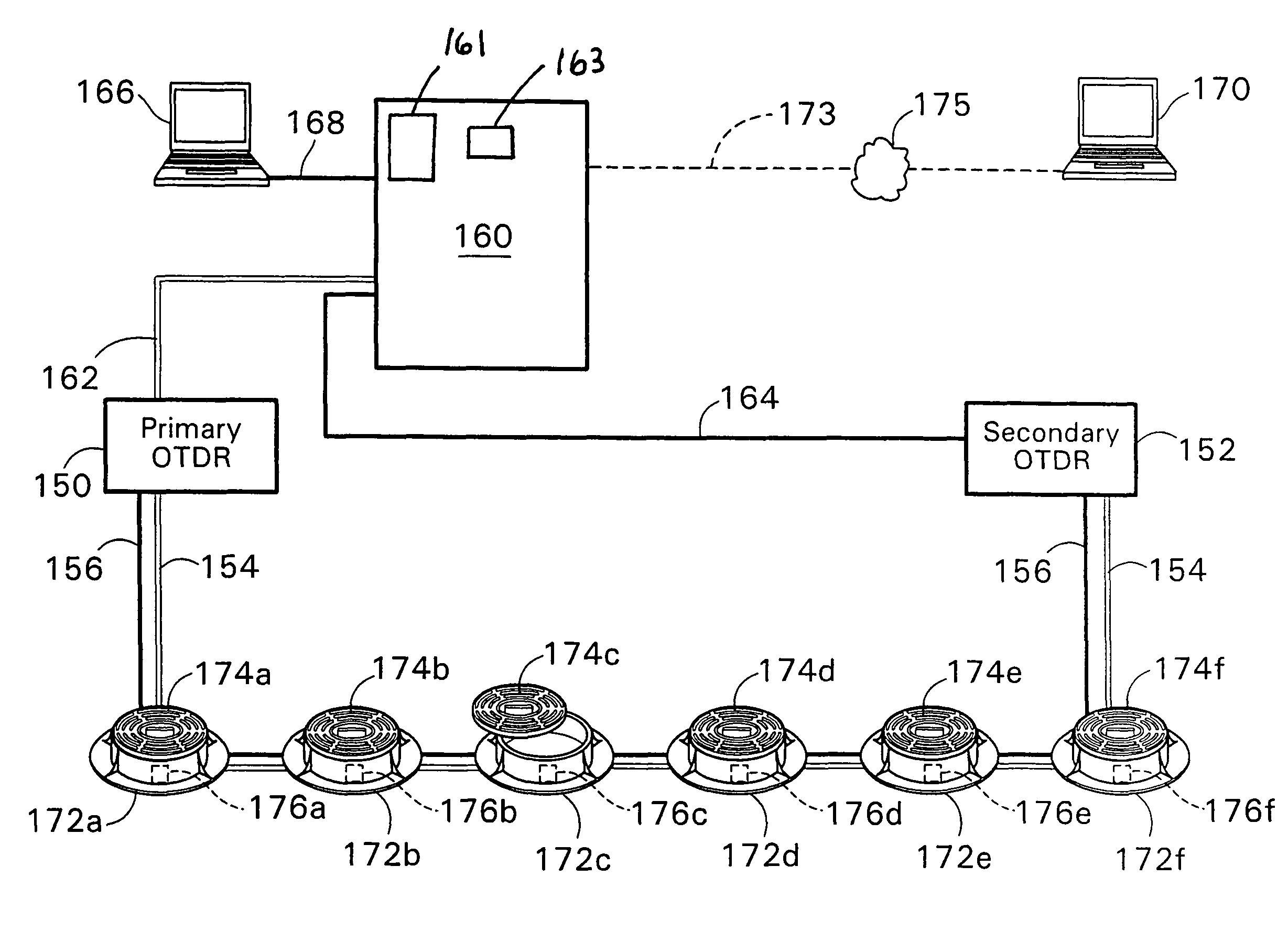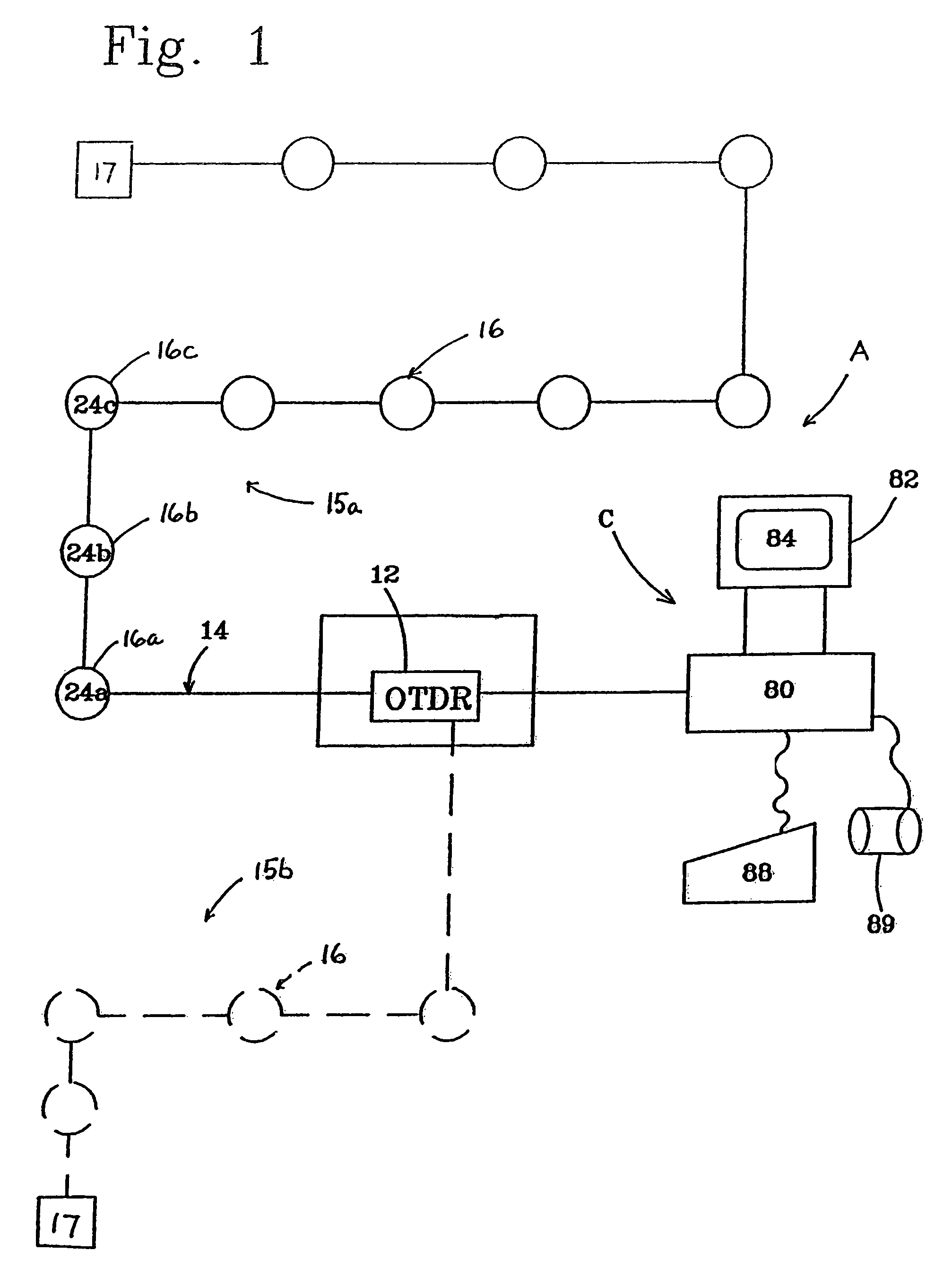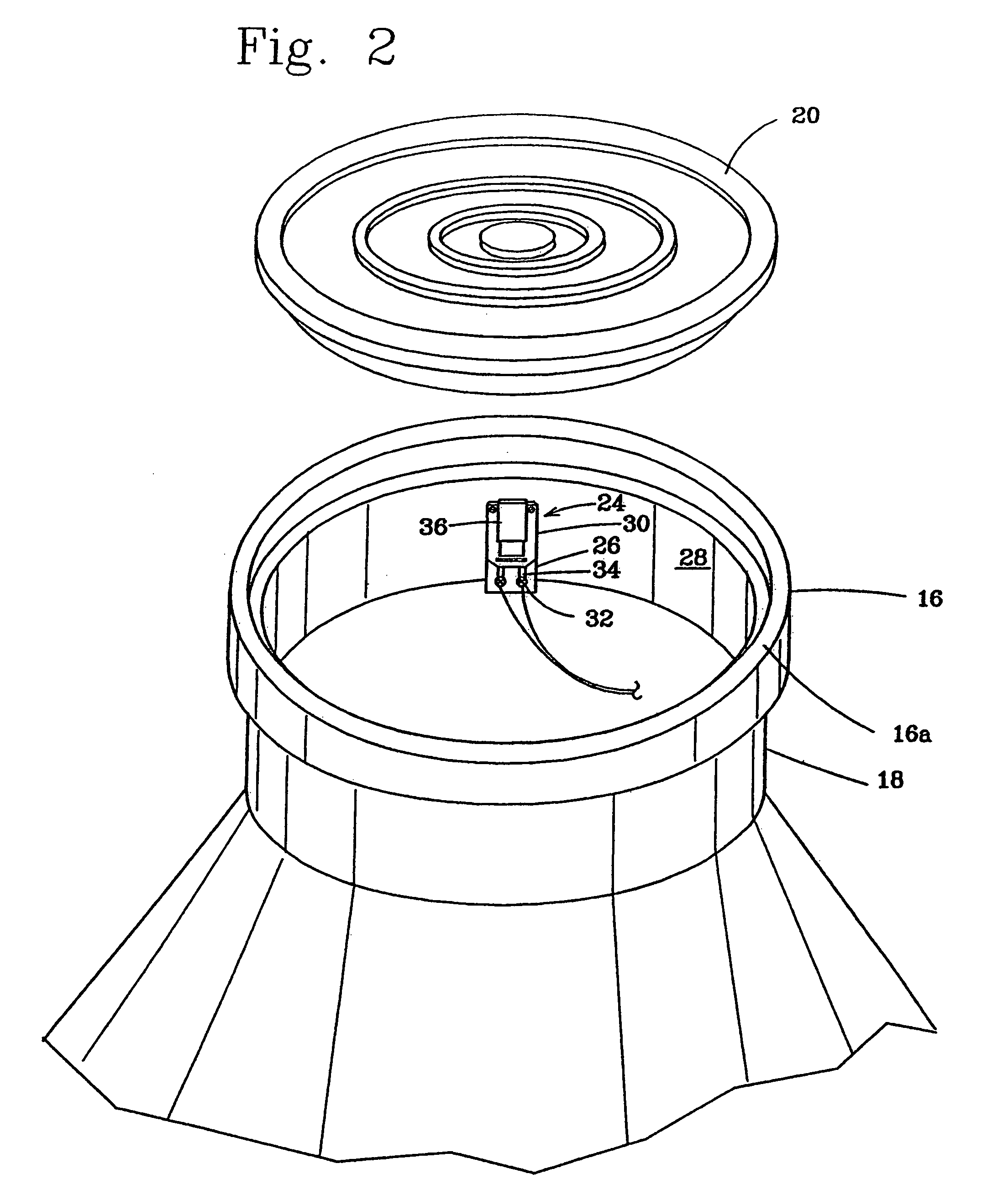Double-end fiber optic security system for sensing intrusions
a security system and fiber optic technology, applied in the direction of optical radiation measurement, fire alarm radiation actuation, instruments, etc., can solve the problems of system not being suited to a wide geographical area security system, not using fiber optics,
- Summary
- Abstract
- Description
- Claims
- Application Information
AI Technical Summary
Benefits of technology
Problems solved by technology
Method used
Image
Examples
Embodiment Construction
[0042]Referring now to the drawings, the invention will now be described in more detail.
[0043]As can best be seen in FIG. 1, an optical fiber security system, designated generally as A, is illustrated. The security system includes a remote processor, designated generally as 10, for processing an intrusion signal to determine the occurrence, type or cause, and location of the intrusion. The processor may, for example, include an optical time domain reflectometer (OTDR) 12, of the type routinely utilized to monitor maintenance of fiber optic network systems, coupled with a computer and resident software for assessing the nature of the intrusion based on stored “signature” intrusion signal data. Typically, the OTDR is used to sense a fiber breakage, water seepage, irregular bends, or other defects in one or more optical fibers of the fiber network along the routing path of the network. For example, in large municipalities it is not uncommon for there to be 1,000 miles of fibers in an o...
PUM
 Login to View More
Login to View More Abstract
Description
Claims
Application Information
 Login to View More
Login to View More - R&D
- Intellectual Property
- Life Sciences
- Materials
- Tech Scout
- Unparalleled Data Quality
- Higher Quality Content
- 60% Fewer Hallucinations
Browse by: Latest US Patents, China's latest patents, Technical Efficacy Thesaurus, Application Domain, Technology Topic, Popular Technical Reports.
© 2025 PatSnap. All rights reserved.Legal|Privacy policy|Modern Slavery Act Transparency Statement|Sitemap|About US| Contact US: help@patsnap.com



